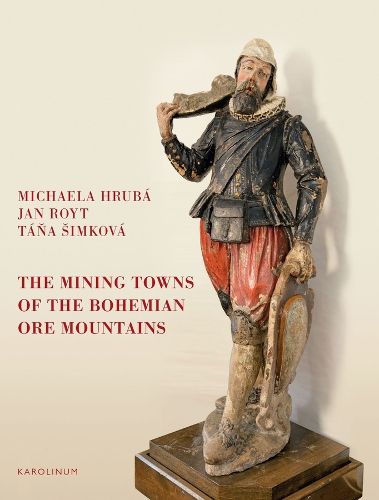Readings Newsletter
Become a Readings Member to make your shopping experience even easier.
Sign in or sign up for free!
You’re not far away from qualifying for FREE standard shipping within Australia
You’ve qualified for FREE standard shipping within Australia
The cart is loading…






A history of the lost art of the Bohemian Ore Mountains.
The development of mining towns in the Ore Mountain region of Bohemia during the thirteenth to the sixteenth century was driven by the Saxon nobility who brought with them the culture of their homeland. The art and architecture of the Ore Mountains, financed by wealthy miners and local nobility, therefore followed a different path than Prague yet rivaled its importance and grandeur.
The Mining Towns of the Bohemian Ore Mountains introduces the most important mining centers and historical monuments, exploring what made the late Gothic and early Renaissance periods in northwest Bohemia so distinct from the rest of the kingdom. It also examines the specific cultural space that formed, where locals viewed the Bohemian-Saxon border as an abstract political concept that had little to do with day-to-day reality. The authors trace the monuments and works of art until the second half of the twentieth century when many of them tragically vanished because of lignite mining.
$9.00 standard shipping within Australia
FREE standard shipping within Australia for orders over $100.00
Express & International shipping calculated at checkout
Stock availability can be subject to change without notice. We recommend calling the shop or contacting our online team to check availability of low stock items. Please see our Shopping Online page for more details.
A history of the lost art of the Bohemian Ore Mountains.
The development of mining towns in the Ore Mountain region of Bohemia during the thirteenth to the sixteenth century was driven by the Saxon nobility who brought with them the culture of their homeland. The art and architecture of the Ore Mountains, financed by wealthy miners and local nobility, therefore followed a different path than Prague yet rivaled its importance and grandeur.
The Mining Towns of the Bohemian Ore Mountains introduces the most important mining centers and historical monuments, exploring what made the late Gothic and early Renaissance periods in northwest Bohemia so distinct from the rest of the kingdom. It also examines the specific cultural space that formed, where locals viewed the Bohemian-Saxon border as an abstract political concept that had little to do with day-to-day reality. The authors trace the monuments and works of art until the second half of the twentieth century when many of them tragically vanished because of lignite mining.